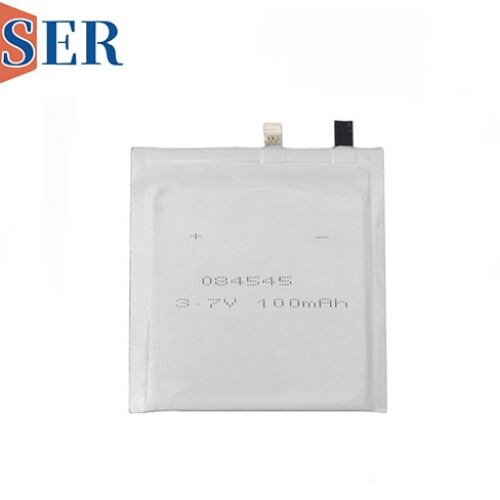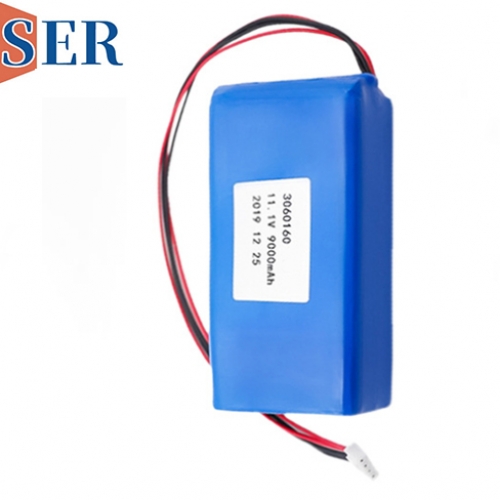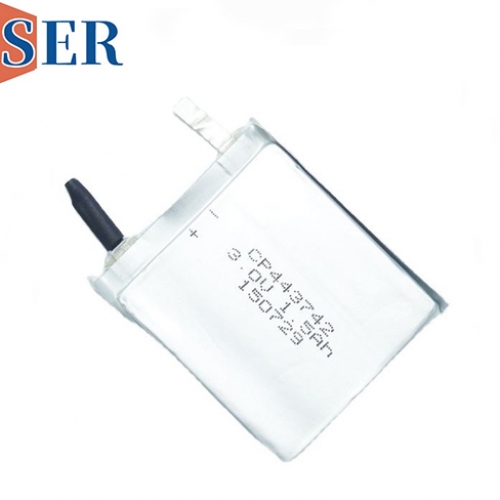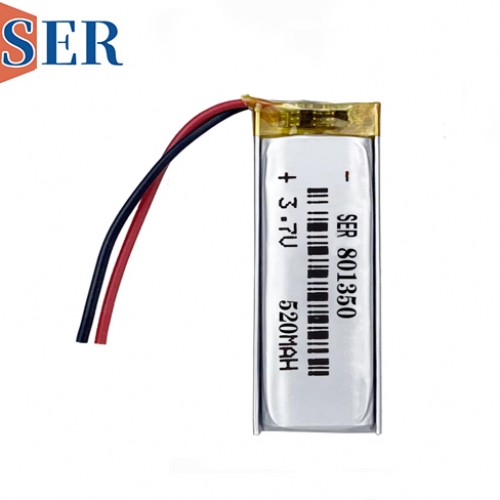3.0V CP401725 Soft Pack Primary Battery Smoke Detectors, GPS Trackers, and Beyond
3.0V CP401725 Soft Pack Primary Battery Smoke Detectors, GPS Trackers, and Beyond
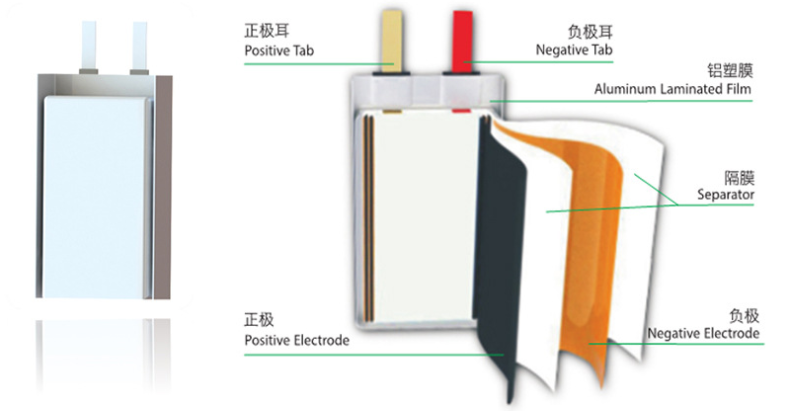
In the fast-paced world of electronic devices, reliable power sources are the backbone of functionality—especially for critical applications like smoke detectors and GPS trackers, where consistent performance can mean the difference between safety and risk, efficiency and downtime. Among the diverse range of batteries available today, the CP401725 Soft Pack Battery stands out as a specialized, high-quality option tailored to meet the unique demands of low-power, long-duration electronic devices. This non-rechargeable primary battery, defined by its 3V voltage, 320mAh capacity, and ultra-thin prismatic design, leverages lithium manganese (LiMnO₂) chemistry to deliver exceptional stability, light weight, and customization potential. In this comprehensive guide, we will explore every facet of the CP401725 battery: its core specifications, chemical composition, design innovations, performance advantages, application use cases, and why it has become a preferred choice for engineers, manufacturers, and end-users alike.
1. Introduction to the CP401725 Soft Pack Battery: Core Specifications and Identity
Before delving into its technical nuances, it is essential to establish a clear understanding of the CP401725 battery’s fundamental identity—what it is, how it is categorized, and the key parameters that define its role in electronic systems. At its core, the CP401725 is a non-rechargeable primary battery, meaning it is designed for single-use operation: once its stored energy is depleted, it cannot be recharged and must be replaced. This distinguishes it from secondary (rechargeable) batteries like lithium-ion or nickel-metal hydride cells, which are intended for repeated charging cycles. For applications where frequent battery replacement is impractical or where long-term, maintenance-free power is required, primary batteries like the CP401725 are indispensable.
The battery’s model number—CP401725—is not arbitrary; it encodes critical dimensional information that engineers rely on for device integration. The digits correspond to the battery’s physical size: 4.1mm in thickness, 17mm in width, and 25mm in length (often abbreviated as 4.11725mm). This prismatic (rectangular) shape is a deliberate design choice, as it allows for efficient use of space in compact devices—unlike cylindrical batteries, which may leave gaps in tightly packed enclosures. The “soft pack” designation refers to its flexible outer casing, typically made of a durable, lightweight polymer material that conforms to the battery’s internal structure while providing protection against external impacts and moisture.
Beyond its dimensions, the CP401725’s performance is defined by two key electrical specifications:
Finally, the CP401725 is classified as a lithium manganese dioxide (LiMnO₂) primary battery. This chemical composition is a key driver of its performance, as LiMnO₂ chemistry offers a unique balance of energy density, stability, and temperature tolerance—attributes that make it well-suited for the harsh or variable environments in which the battery’s target applications often operate.
2. The Science Behind LiMnO₂ Chemistry: Why It Powers the CP401725
To fully appreciate the CP401725’s performance, it is necessary to explore the lithium manganese dioxide (LiMnO₂) chemistry that forms its core. Primary batteries rely on chemical reactions to generate electrical energy, and the choice of electrode materials and electrolytes directly impacts a battery’s voltage, capacity, stability, and safety. LiMnO₂ chemistry has emerged as a top choice for non-rechargeable batteries in consumer and industrial electronics due to its inherent advantages over other chemistries like alkaline (Zn-MnO₂) or lithium-thionyl chloride (Li-SOCl₂).
2.1 Key Components of LiMnO₂ Chemistry in the CP401725
Like all lithium-based primary batteries, the CP401725 consists of three essential components: a positive electrode (cathode), a negative electrode (anode), and an electrolyte that facilitates the flow of ions between the two electrodes.
2.2 How the CP401725 Generates Power: The Discharge Reaction
During operation, the CP401725 undergoes a spontaneous chemical reaction that converts stored chemical energy into electrical energy. The reaction can be summarized as follows:
Anode Reaction (Oxidation): Li → Li⁺ + e⁻
At the anode, metallic lithium is oxidized, releasing lithium ions (Li⁺) and electrons (e⁻). The electrons flow through the external circuit (powering the connected device, such as a smoke detector) to the cathode, while the Li⁺ ions migrate through the electrolyte to the cathode.
Cathode Reaction (Reduction): MnO₂ + Li⁺ + e⁻ → LiMnO₂
At the cathode, manganese dioxide (MnO₂) accepts the Li⁺ ions and electrons, undergoing a reduction reaction to form lithium manganese oxide (LiMnO₂), a stable compound.
Overall Cell Reaction: Li + MnO₂ → LiMnO₂
The combination of these two reactions produces a nominal voltage of 3.0V—exactly the voltage required by many low-power electronic devices. Importantly, this reaction is irreversible in primary batteries like the CP401725: once all the available Li and MnO₂ are converted to LiMnO₂, the battery can no longer generate power, hence its classification as a non-rechargeable primary cell.
2.3 Advantages of LiMnO₂ Chemistry for the CP401725’s Applications
LiMnO₂ chemistry is not just a technical choice—it is a strategic one, tailored to the needs of the CP401725’s target applications (smoke detectors, GPS trackers, etc.). Its key advantages include:
3. Design Innovations of the CP401725: Soft Pack, Prismatic Shape, and Customization
While chemistry is the foundation of the CP401725’s performance, its physical design is equally important. The battery’s “soft pack” construction, prismatic shape, and ultra-thin profile are not just aesthetic choices—they are engineered to address the practical challenges of integrating batteries into modern electronic devices. In this section, we will break down these design features and explain how they enhance the CP401725’s usability and versatility.
3.1 Soft Pack Construction: Flexibility and Light Weight
The term “soft pack” refers to the battery’s outer casing, which is made of a flexible, multi-layer polymer film (typically a combination of polyethylene, polypropylene, and aluminum foil). This differs from “hard case” batteries, which use rigid materials like steel or aluminum. The soft pack design offers several key benefits:
3.2 Prismatic Shape: Space Efficiency for Compact Devices
The CP401725’s prismatic (rectangular) shape is a deliberate alternative to the more common cylindrical battery design. Cylindrical batteries are popular for their simplicity and cost-effectiveness, but they have a major drawback: when placed in a rectangular device enclosure, they leave gaps between the battery and the casing, wasting valuable space. The CP401725’s prismatic shape solves this problem by maximizing space efficiency.
3.3 Customization: Tailoring the CP401725 to Specific Needs
The CP401725 is marketed as a “customized” battery, and this flexibility is a key selling point for manufacturers. While the core specifications (3V, 320mAh, LiMnO₂ chemistry) are fixed, there are several ways the battery can be modified to meet the unique requirements of different devices:
This level of customization ensures that the CP401725 is not a “one-size-fits-all” solution but a versatile power source that can be adapted to the specific needs of smoke detectors, GPS trackers, and other low-power electronic devices.
4. Performance Testing and Reliability: Ensuring the CP401725 Meets Industry Standards
For a battery used in critical applications like smoke detectors and GPS trackers, performance and reliability are non-negotiable. A faulty battery can lead to device failure, which in the case of a smoke detector, could have life-threatening consequences. To ensure the CP401725 meets the highest standards, manufacturers subject it to a series of rigorous tests, covering everything from capacity and voltage stability to safety and environmental durability. In this section, we will outline the key tests the CP401725 undergoes and explain how these tests validate its performance.

